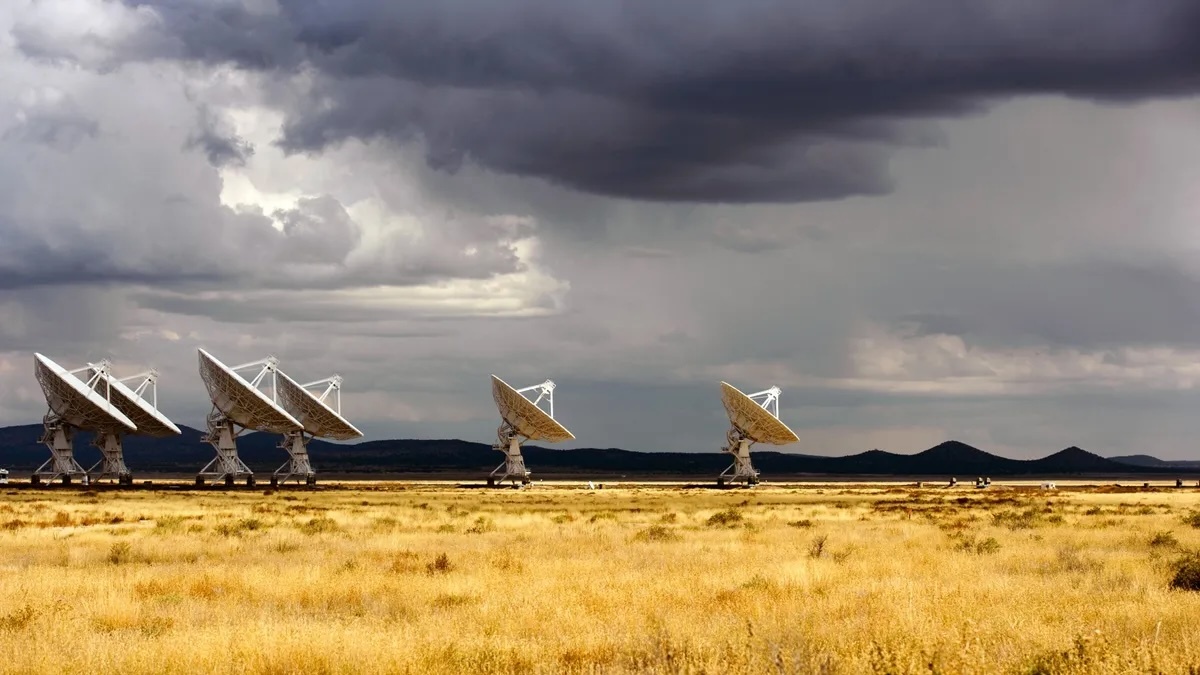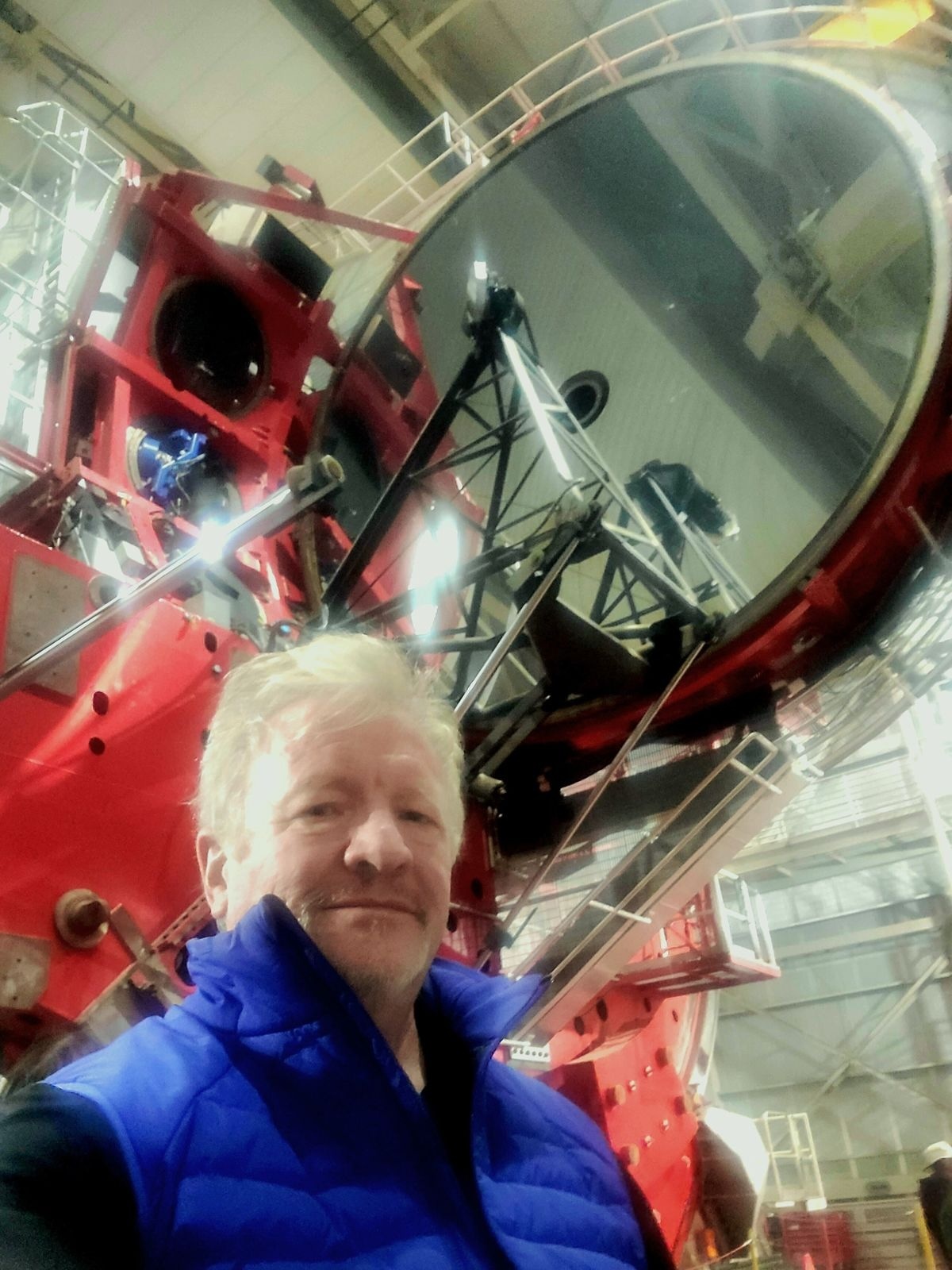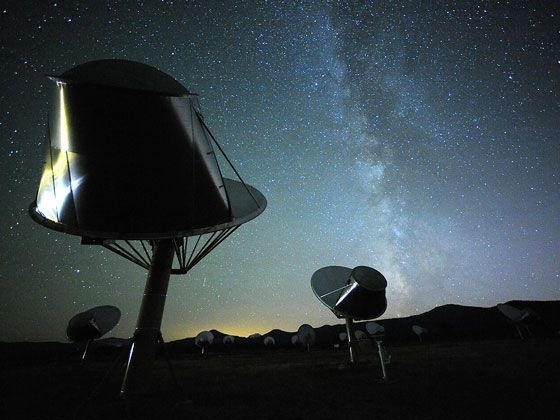17.04.2024
"The idea that the government is keeping something like this secret is just totally absurd. There's no motivation to do so."

The Karl G. Jansky Very Large Array is a radio astronomy observatory located in the Plains of San Agustin in New Mexico. (Image credit: Getty Images/Feifei Cui-Paoluzzo)
If all the reports of mysterious objects buzzing our skies are taken as true encounters, the Earth appears to be under assault.
But spoiler alert: For the chief leader of the SETI Institute, established to search for and understand life beyond Earth, there's a need to step back and cuddle up to a cup of cosmic reality.
"We don't have any evidence of any credible source that would indicate the presence of alien technology in our skies. And we never have," said Bill Diamond, president and chief executive officer of the SETI Institute, headquartered in Mountain View, California. "The idea that the government is keeping something like this secret is just totally absurd. There's no motivation to do so."
SETI is a key research contractor to NASA and the National Science Foundation, and collaborates with industry partners throughout Silicon Valley. Space.com caught up with Diamond for a close-encounter with his own thoughts and counterpoints to claims of alien visitation and to ask whether there's any signal in all the UFO noise.

Bill Diamond, president and chief executive officer of the SETI Institute. (Image credit: Bill Diamond)
Thought experiment
Diamond said that, while we should not outright rule out the possibility that we might someday discover evidence of alien technology in our skies, "we should equally not jump to the conclusion that UFOs are alien technology in the absence of any compelling evidence to that effect. And there is no compelling evidence," he contends.
To help visualize why, Diamond urges people to try a thought experiment.
The fastest spacecraft that humans have ever built and continues to head outward from Earth is NASA's New Horizons spacecraft. It was hurled outward back in January 2006, cruising by Pluto and is still adding mileage to its odometer.
"If you sent that spacecraft to our closest neighbor star, Alpha Centauri, it would take 80,000 years to get there," said Diamond. "Any civilization that has mastered the ability to traverse the incomprehensibly vast distances of interstellar space would have technology so far advanced from our own as to be beyond our comprehension."
It would be much like a smartphone to a Neanderthal, Diamond suggested.
"If such beings exist, they would likely send hardware here first and not biology, and they certainly wouldn't crash-land in our deserts," he said, like the alleged and highly acclaimed 1947 nose-dive of a UFO and its accident-prone occupants near Roswell, New Mexico.
In short haul language, that's a long way to travel and run out of braking fluid.
Where's the mothership?
"Long before they sent any craft into our sky they would have some understanding of what they were dealing with," Diamond observed, "as they would already know everything about our atmosphere, our airspace, our technology and more."
It just wouldn't happen, Diamond emphasized.
"And if it did they wouldn't leave them behind. And by the way, if you have a small craft zipping around in our airspace, where is the mothership? And if they didn't want to be observed, they wouldn't be!"
Connective tissue
All the same, in the public mind, is there some kind of connective tissue between SETI and UFOs?
"There is definitely connective tissue," Diamond responded. "Why do people have these beliefs? It is because they want to believe. Nobody really wants to think that this Earth is the only place in the vastness of space where life has emerged. Even that idea is also kind of absurd."
For example, Diamond points to the revelations cranked out by the NASA Keplermission, lofted in March 2009.
That hunter/data-gatherer spacecraft discovered more than 2,700 planets beyond our solar system. Compiling deep space data for nine years, the message from Kepler: there are billions of unseen planets, indeed, more planets than stars.
Statistical probability
"Statistically speaking, every single star in the sky has one or more planets around it," Diamond pointed out. Furthermore, 50 percent or more of these are Earth-like (rocky surface and similar size) and in the habitable zone of their host star, he said.
"That implies the existence of tens of billions of potentially habitable worlds in our galaxy alone," Diamond said. "So indeed, the statistical probability that we are alone in the Universe is zero. Surely there is life beyond Earth!"
But the presence, both in space and time, as well as proximity, of advanced alien civilizations is another matter completely, Diamond continued. "There are innumerable variables, all of which in the sciences of astrobiology, planetary science, astronomy and astrophysics, we are trying to figure out."
Accidental observations

The SETI Institute's Allen Telescope Array is the first radio telescope to be designed from the ground up to search for extraterrestrial intelligence. (Image credit: Seth Shostak, SETI Institute)
Diamond questions why any alien civilization would send biology when they could isntead send hardware.
"The farthest things we have sent into space are hardware. And that's logical," said Diamond. "But if you did send beings and the most interesting thing you can do is draw circles in crops … come on!"
One other scoop of skepticism Diamond added is that every single UFO — now tied to the term Unidentified Anomalous Phenomena (UAP) — are all "accidental observations."
"Therefore, they are highly unreliable. They don't have instrumentation, technology, or methodology to discern what they are looking at," said Diamond.
Lastly, the SETI Institute leader said if the government actually believed in ET buzzing our planet, where's the study money?
"The lack of government funding to study UAP/UFO is evidence of either the government being quite certain that there's nothing to these accidental observations — or — the government preferring that we not use available technology to closely watch our skies because of our own human technologies that are being developed — in secret," said Diamond.
"I think that's the most compelling bit of evidence against the idea that we've got visitors in our skies," Diamond concluded.
Quelle: SC

